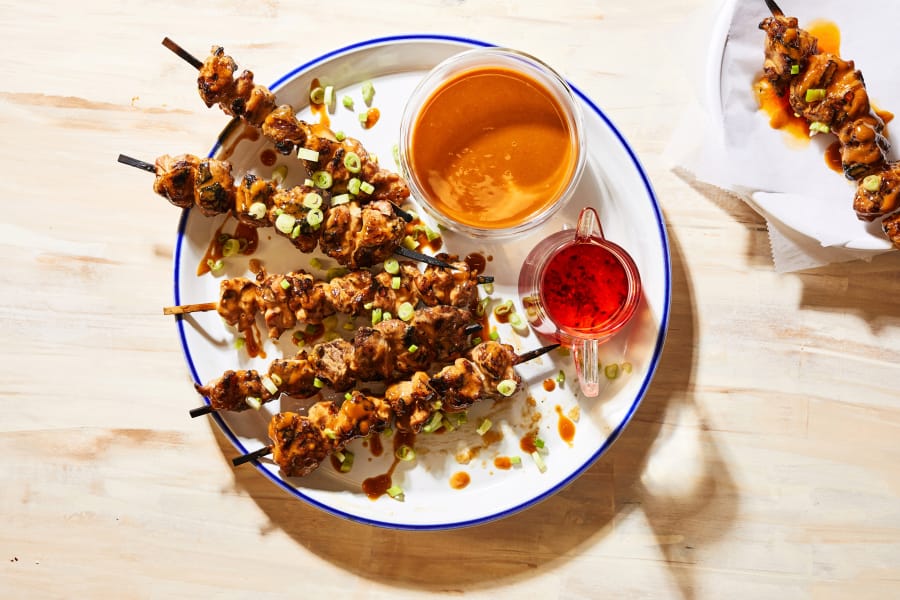A few weeks back, I was ordering lunch at a seafood joint in Alexandria, Virginia when I spied a peculiarly named appetizer, “bang bang” shrimp. As a student of Chinese cooking, I recognized the name, so I gave it a try. What appeared several minutes later were deep-fried prawns tossed in a creamy mixture of garlic, ginger, ground chiles and mayonnaise. Sure, the name of this increasingly popular dish evokes an exotic ode to explosive Asian heat, but no matter how delicious the snack may be, Chinese cooks would be confounded. Deep-fried? Mayonnaise? Spicy? Heck, in China, despite its fiery name, “bang bang” doesn’t even refer to flavor!
Sometimes a Chinese dish is named for its evocative appearance (“lion’s head” meatballs), at times for stunning folklore (“barbarian head” buns), and in a few brilliant examples, for the sound made when the food is being prepared. Bang bang chicken’s name derives from the age-old noise of a baton smacking a whole cooked bird, breaking it into serving portions, where a kitchen cleaver just wouldn’t cut it (evenly). Chicken busted up in such a fashion is indeed bang bang, with or without a dressing. Over the centuries, however, the legendary name has come to mean the fully dressed masterpiece with a signature sauce.
Traditionally, the five flavors in Chinese cookery are salty, sour, sweet, spicy and bitter. Where a single meal should present a balance of these elements, it’s remarkable when a single sauce embraces all five, and in a humble street snack at that. Today, where most bang bang chicken vendors sell from name-brand stalls at morning markets, their history runs deep. Ingenious Southwestern cooks during the Ming Dynasty struck alchemy: simple poached chicken and a combination of soy sauce, sugar, vinegar, chile oil, Sichuan peppercorn and sesame paste. Virtually every modern bang bang vendor has a unique twist on the formula, yet the ingredients and overall effect remain. (And, in case you’re wondering, it’s quite different from Laotian bang bang sauce, which doesn’t include a creamy element.)
When I began my China wandering in the 1990s, I enjoyed more than my fill of devilishly spicy Sichuan specialties. But the first time I tried a properly dressed bang bang chicken, it was as if my palate had suddenly graduated from grammar school, skipped high school entirely and was now enlisted in Sichuan University. My understanding of Sichuan cuisine moved from the idea of the stereotypical incendiary fare to the appreciation of it as a rich and complex cuisine that just so happened to occasionally burn the tongue out of your mouth. There is hardly another Chinese sauce that evokes such perfection: spicy but not burning, sweet but not cloying, bitter but not disarming, sour but not puckering, salty but not oceanic.



